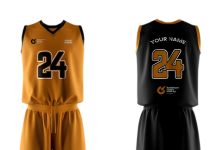In the realm of sports, the choice of equipment plays a pivotal role in determining an athlete’s performance. Whether you’re gliding across a badminton court or sprinting on a soccer field, the right gear can make all the difference. In this blog, we delve into the intricate world of badminton racquets and soccer shoes, exploring the craftsmanship, technology, and design that make them essential companions for athletes in their respective sports.
Read all the important information about Badminton Racquet and Soccer Shoes
Badminton Racquets: Precision in Every Swing
Badminton, a sport known for its fast-paced rallies and precision, demands a racquet that can keep up with the intensity of the game. Modern badminton racquets are a testament to advanced materials and engineering. Carbon fiber, titanium, and graphite are commonly used to create frames that are not only lightweight but also incredibly durable.
1. Frame Technology:
The frame of a badminton racquet undergoes meticulous engineering to strike the right balance between stiffness and flexibility. High-quality racquets boast a slim profile, reducing air resistance and allowing players to execute swift and controlled shots.
2. String Tension:
String tension is a critical factor in a badminton racquet’s performance. Players can customize their racquets by adjusting the tension of the strings. Higher tension provides more control, while lower tension offers greater power. It’s a delicate balance that seasoned players fine-tune to match their playing style.
3. Grip Comfort:
The grip of a badminton racquet is often underestimated but is crucial for maintaining control during intense rallies. Sweat-absorbing materials and ergonomic designs contribute to a comfortable grip, ensuring that players can focus on their game without distractions.
Soccer Shoes: Traction and Agility on the Pitch
Soccer, a sport that demands agility, speed, and precise footwork, relies heavily on the type of shoes players wear. Soccer shoes, also known as cleats, are designed to provide the necessary traction on the field while offering comfort and support.
1. Cleat Design:
The design of soccer shoe cleats varies based on the playing surface. Firm ground (FG) cleats are ideal for natural grass fields, while soft ground (SG) cleats feature longer studs for wet and muddy conditions. Turf (TF) and indoor (IC) cleats cater to artificial turf and indoor surfaces, respectively.
2. Material Innovation:
Advancements in materials have revolutionized soccer shoe construction. Lightweight yet durable materials such as synthetic leather and knitted fabrics are commonly used to enhance agility and ball control. Mesh panels contribute to breathability, keeping players comfortable throughout the match.
3. Ankle Support:
Many soccer shoes feature designs that provide varying degrees of ankle support. Players can choose between low-cut, mid-cut, and high-cut styles based on their preference and the level of support required for their playing style.
Conclusion:
The world of sports equipment is a fascinating intersection of technology, innovation, and athlete-specific customization. Whether you’re wielding a badminton racquet or lacing up your soccer shoes, the attention to detail in design and materials underscores the commitment to enhancing athletic performance. These tools are not just accessories; they are an extension of the athlete, finely tuned to meet the demands of their chosen sport.

















